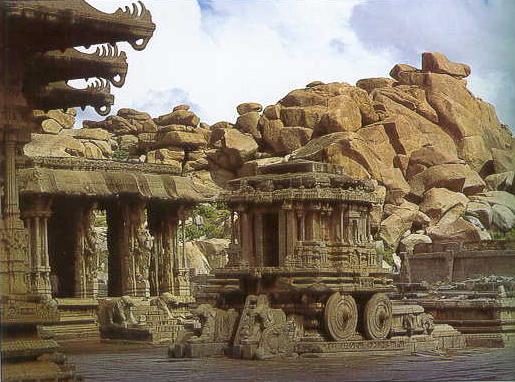Hampi – A Legendary City of The Past
For all who are familiar with the famous epic Ramayana, Hampi would be of great significance. It is believed that Hampi was the Monkey Kindgdom (Kishkinda) that was mentioned in the Ramayana. History shows that this city’s significance as a center of trade grew from around 1336 AD when it became the foundation of the Vijayanagara Empire. By 1565 the empire was covering the whole area between the Arabian Sea, Bay of Bengal Ceylon and the Deccan Plateau. It reached its zenith under the ruling of Emperor Krishnadevaraya.
This is not exactly a place where you would have regular tourist fun. Hampi is a treasure for people who love history and the knowledge it disseminates regarding the past ancient Indian civilization. This ruin city bears silent yet loud testimony of a glorious past of India and would thrill anyone who enjoys the soundless testimony its ruins brings to us, the modern generations.

Today, Hampi is a recognized and protected world heritage monument under UNESCO and Indian Government. Archeological excavations have unearthed a treasure of artifacts in the form of carved stone figurines and statues and many other things that are amply shown as ruins of grand palaces of the past kings of India. Buddhist inscription dated 2-3rd Century were also found at this site indicating the Buddhism was maybe a well known religion in this area during that time.
Many great travelers in the past have mentioned Hampi’s grandeur and beauty when it was at its peak. Domingo Peas compares it to Rome an says, “…it is undoubtedly the best provided city in the world.†The trade that flourished in those times in the city of Hampi was specially based on precious and semi-precious stones.
The city’s architectural richness have totally enthralled historians and historic visitors alike. There are architectural masterpieces such as the temples of Hazara Rama, Balakrishna and the Vitala; there are impressive structures that show the advanced knowledge of engineering and architecture of that period of time such as the Queen’s Bath, the Kamala Mahal (Palace) and so on.
The glory of Hampi came to an end when the empire fell in the Battle of Talikota in 1565 AD and came under the ruling of the alliance of five Bahamani Kings who completely destroyed the city while ransacking for war spoils. In spite of the massive destruction that had befallen, Hampi still lives on to say the whole story of its glorious past.
Hampi is a place which will easily transport you back in time to the 13th century with each stone and ruined remains that is available. The place is vibrant with the richness of the past and continues to create and attract the fascination of people from all over the world.
 Stumble it!
Stumble it!